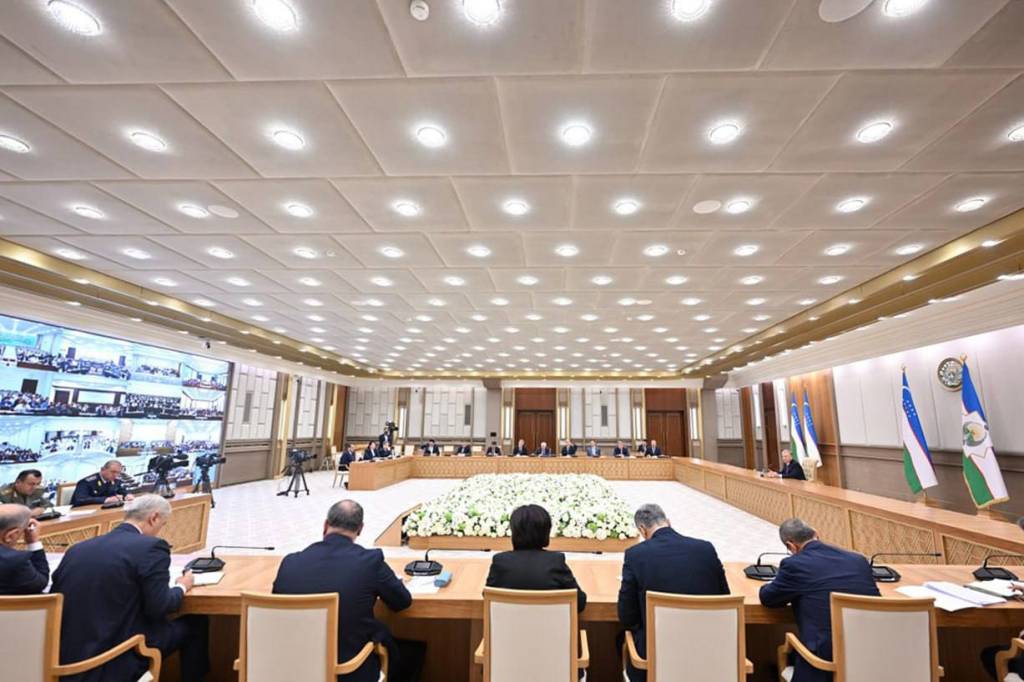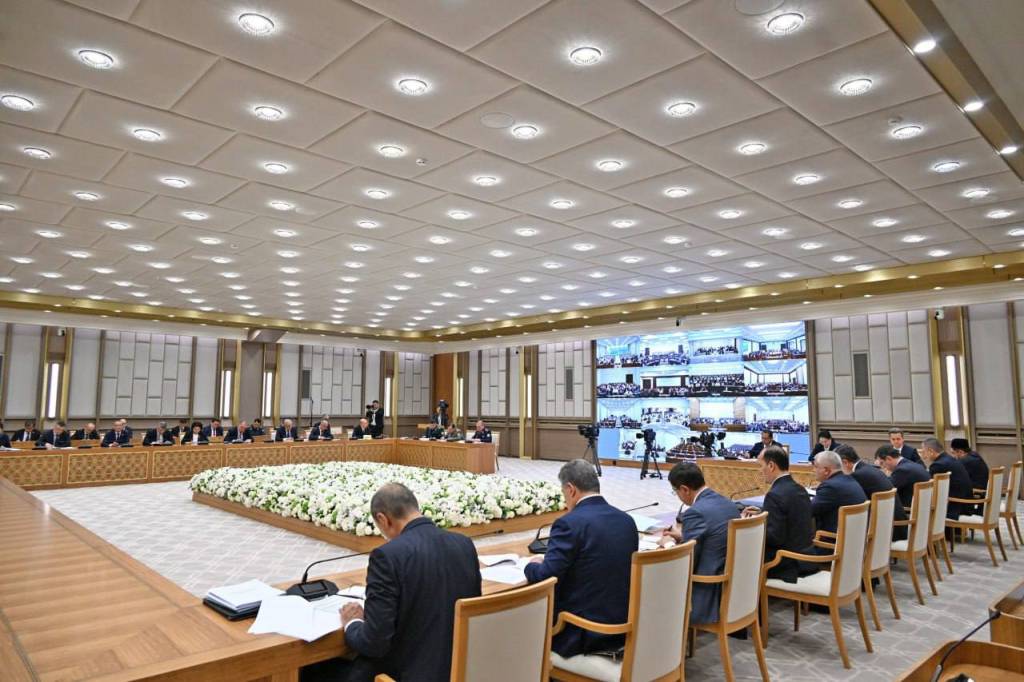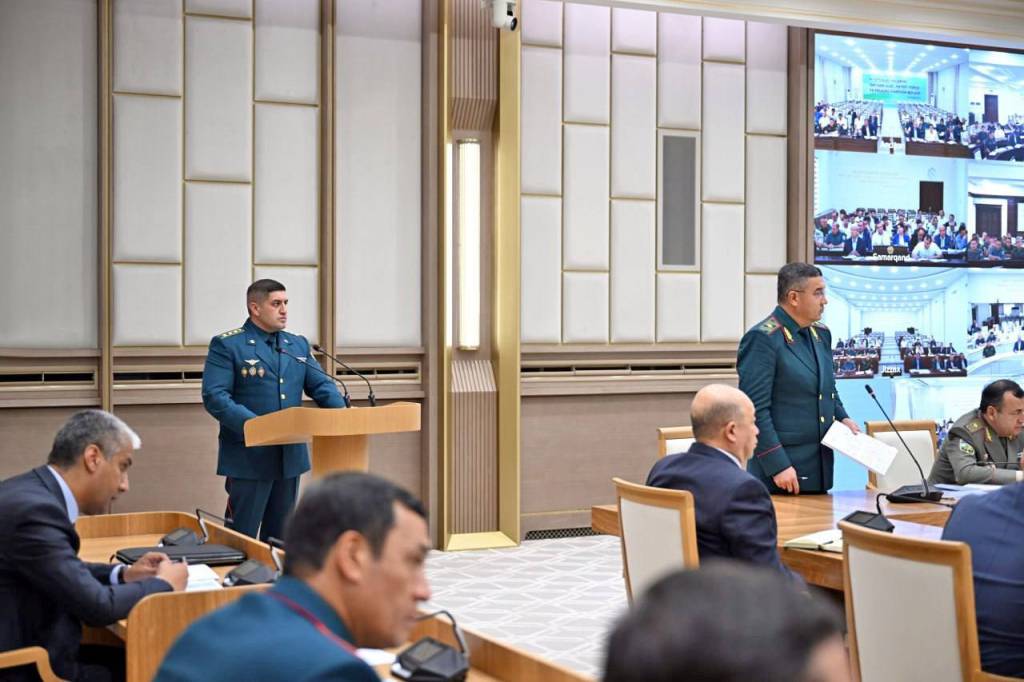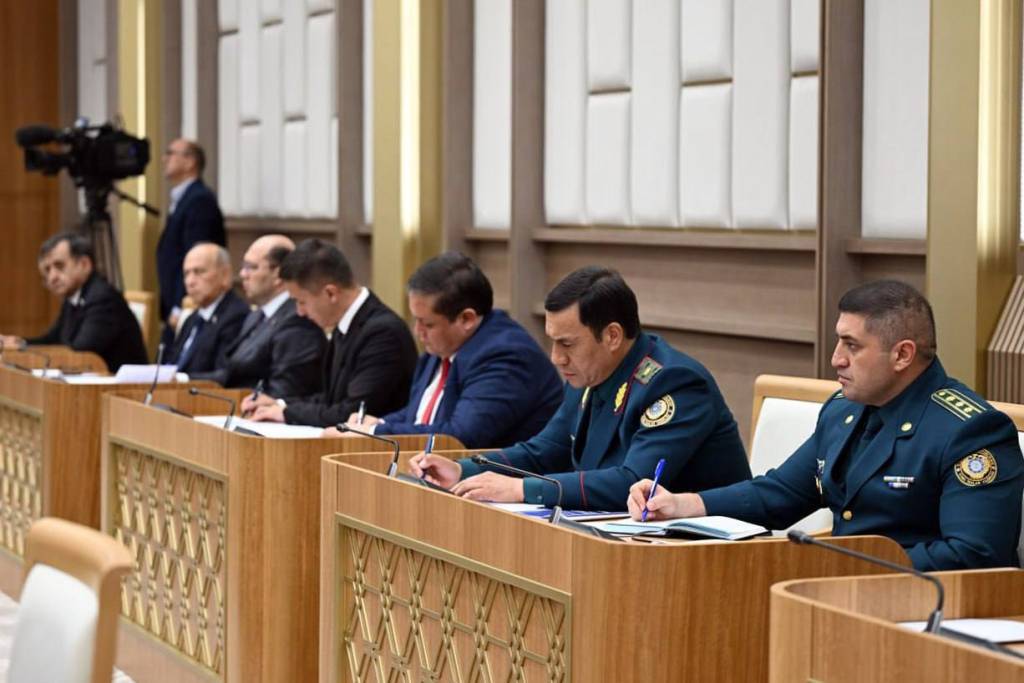Additional measures for ensuring road traffic safety are determined
On July 9, President Shavkat Mirziyoyev chaired a meeting to discuss measures for ensuring road traffic safety, improving infrastructure, and reducing traffic congestion.
Targeted work is being implemented in this field. In recent years, 61 trillion UZS has been allocated to the construction and reconstruction of roads – this is 3.5 times more than the financing volumes before 2017.
An online appeal system was introduced, resulting in a 50 percent reduction in visits to road safety units. 3,365 road safety officers were provided with electronic tablets and body cameras. The practice of automatically recording violations and making decisions using artificial intelligence has been introduced. Special lanes for public transport have been organized in cities.
Last month, new relaxations for drivers were also introduced. For example, drivers who violate the rules for the first time are no longer fined, but instead receive a warning. Fixation of crossing road markings by cameras has been canceled. Movement on the lanes for public transport in the evening is allowed. It is forbidden to carry out road works in the daytime. In places where radars are installed, it has become mandatory to place an appropriate road sign.

Nevertheless, there are still many urgent problems in this sphere. Primarily, road accidents. Last year, 9,364 such cases were registered, as a result of which almost 9 thousand citizens suffered, and 2,203 people died.
“The fact that every fourth accident kills a person, and on average, every day we lose six lives, should be of serious concern to everyone”, Shavkat Mirziyoyev said.
Road safety primarily depends on the condition and convenience of roads. In several regions, infrastructure improvements have helped reduce the number of accidents. However, in 20 regions, the level of road accidents remains high. Overall, the damage caused by accidents is estimated at 0.4 percent of the country’s GDP.
In this regard, during the meeting, the launch of the National Program “Safe Road” was announced. The “Safe Road and Safe Pedestrian” Fund will be reestablished and brought under government management. This year, the fund, according to preliminary estimates, is expected to receive 400 billion UZS from various sources.

A separate financial account of the fund will be opened in each region. Enterprises in the Ministry of Internal Affairs system responsible for installing road signs, traffic lights, and markings will be transferred to regional subordination.
The activity of the fund will be transparent, comprising heads of territorial road safety departments, road services, and representatives of the public. Firstly, the funds will be allocated for the elimination of emergency sites. The work will commence with 23 hazardous sections on highways, totaling 175 kilometers in length.
Also, separate road funds have been created in all districts. Soon, an electronic portal will be launched, where residents will be able to indicate places that need the installation of signs, traffic lights, or crosswalks. Subsequently, photo and video materials documenting the implementation of these proposals will be posted on the portal, allowing residents to evaluate the work.
The goal is to use new opportunities to improve traffic flow and significantly reduce the number of accidents with severe consequences.

Another problem is the lack of turning areas. Although there are more than 1,200 turning places on highways, only 146 of them are in the form of elevated or underground interchanges. Out of more than 10 thousand crosswalks, only 154 have such a solution.
In this regard, the Ministry of Transport has been instructed, in cooperation with the World Bank, to conduct a diagnostic assessment of the compliance of the international highways Tashkent – Samarkand – Termez, Tashkent – Fergana Valley, and Samarkand – Bukhara with safety requirements. Based on the analysis, projects will be developed to ensure safe U-turns and crosswalks, as well as to improve the system of signs and markings.
The country’s intercity public transportation system is not yet well established. Buses leave not according to the schedule, but after filling up with 40-50 passengers.
Therefore, the meeting identified measures to develop public transportation serving medium and long-distance routes. In particular, a special approach will be applied for Tashkent and interregional routes.

First, the capital’s public transport will switch to a single agglomeration system covering all adjacent districts of Tashkent region. For this purpose, 20 routes reaching the outskirts of Tashkent will be extended by 15-20 kilometers, and 6 new routes will be opened. The capital will receive 200 buses by September, and another thousand next year. As a result, it is expected to reduce traffic in Tashkent by 25 thousand cars.
Second, inter-regional bus service will be improved. A subsidy will be provided for each passenger to cover these transportation services. The privilege on the utilization fee for buses will be extended for another three years, and will also be extended to minibuses. Customs exemptions for tourist buses and minibuses will also be extended for three years, as well as for all public transportation.
It is well known that one of the causes of traffic congestion is the shortage of parking spaces. As a result, drivers in Tashkent and other major cities are often forced to park their cars along the roadside. Some streets near the buildings of ministries, agencies, and hokimiyats were blocked.

Responsible persons have been instructed to eliminate such cases and dismantle all unjustified prohibitive signs on streets near state institutions and mahallas.
The Ministry of Transport was instructed to create an electronic platform for dialogue with drivers and study their problems.
Improving driving culture also remains an extremely urgent task. Last year, about 20 million gross traffic violations were recorded. For some drivers, this is a chronic condition.
To combat this, a program called “Persistent Violators” will be introduced. Those who repeatedly violate the rules – driving in the opposite lane, running a red light, or significantly exceeding the speed limit – will not be given a discount on the fine for a year. If a driver commits more than 10 such violations in a month, his driver’s license may be revoked for up to six months. For speeding 2-3 times over the speed limit, it is possible to have your driver’s license permanently revoked.

Sometimes, the decision on the fine is issued several months after the violation, which causes bewilderment and protests. Now, if more than a month has passed since the violation, the fine will not be applied.
The new driver training system has started to yield results. However, it’s necessary to improve the knowledge and discipline of pedestrians, especially young people. In this regard, road safety programs in schools and kindergartens will be updated. The “Green Light” competitions will be resumed, and the winners in the national stage will be awarded the President’s prize. Video content and animation clips on traffic rules will also be created.
At the meeting, the responsible persons reported on the fulfillment of the set tasks.
UzA
 Ўзбекча
Ўзбекча English
English Русский
Русский




